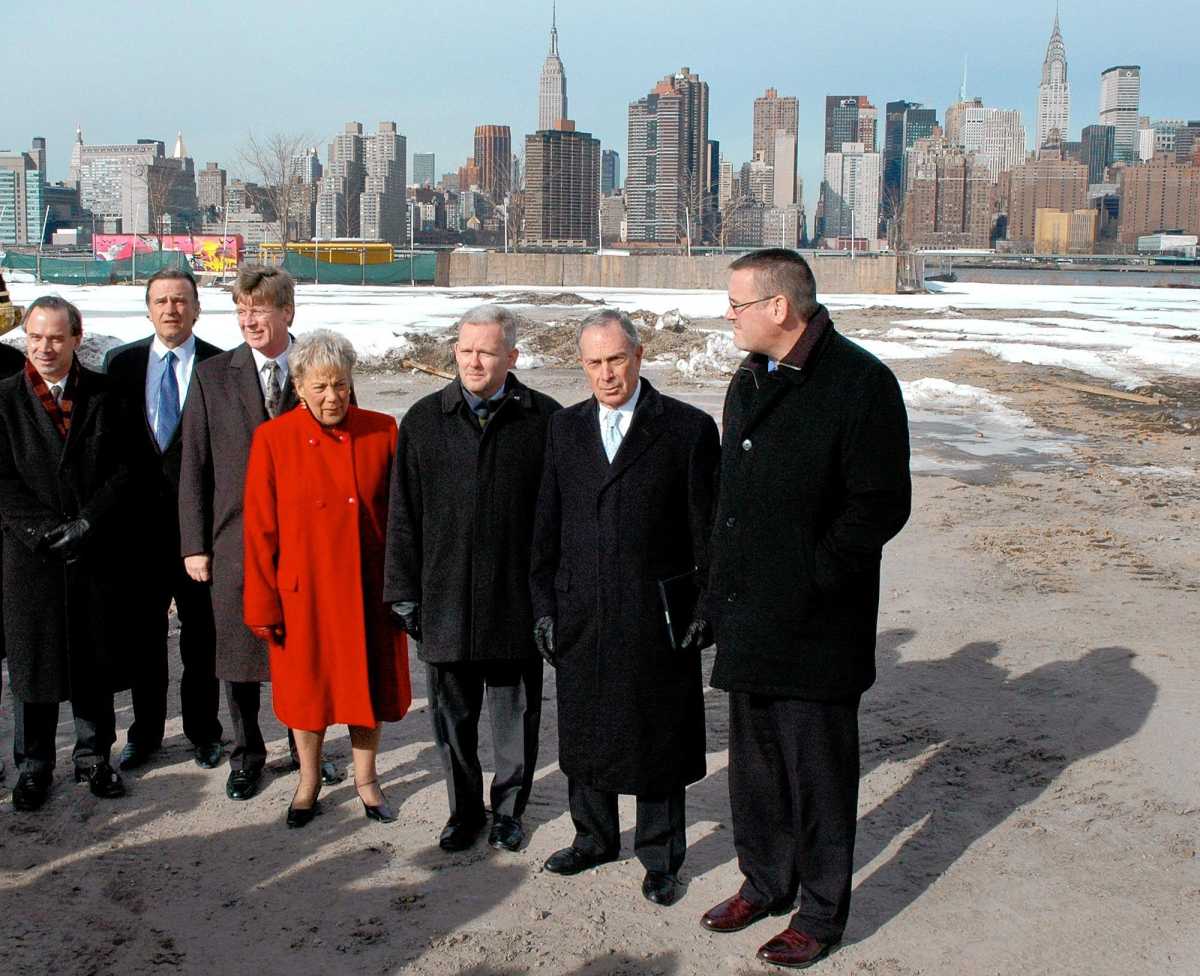By Connor Adams Sheets
City Councilman Jimmy Van Bramer (D-Sunnyside) said Monday that Mayor Michael Bloomberg’s announcement that the city has chosen a developer and accepted a proposal for the first phase of Hunters Point South is yet another promising step in the ongoing revitalization of Long Island City.
“We are in a position to increase the amount of affordable housing stock in Hunters Point and along the waterfront while at the same time getting a huge waterfront park, a public school and many other improvements to what is already an amazing place to live,” he said. “I think it’s going to be a good thing and I think we’re going to continue to see Long Island City and Hunters Point be one of the premiere neighborhoods in all of New York City.”
The $360 million first phase will be the city’s largest affordable housing project since the early 1970s, Bloomberg announced at a press conference at the site last week.
A development team of Phipps Houses, Related Cos. and Monadnock Construction will oversee the $360 million first phase of Hunter’s Point South, on the banks of the East River in Long Island City, the mayor said.
“Hunters Point South is the first large-scale middle-class housing project to be built in our city in 3 1/2 decades,” Bloomberg said at a ceremony Feb. 19 at the Waterfront Crab House, located directly across from the site. “Hunters Point South will transform 30 acres of abandoned waterfront into a thriving residential neighborhood.”
The developers’ plan for Phase 1, designed by SHoP Architects and Ismael Leyva Architects, calls for two mixed-use towers with a total of 908 residential units, at least 75 percent, or about 685, of which would be affordable; 20,000 square feet of retail; a new school, which began construction Feb. 9; a 5-acre waterfront park; and a state-of-the-art library. Work on Phase 1 is expected to be completed in 2014, the mayor said.
The city expects the entire Hunters Point South project, located almost directly across the East River from the United Nations building in Manhattan, to catalyze more than $2 billion in private investment and create more than 4,600 jobs.
When complete, the entire Hunters Point South project is slated to include about 5,000 new housing units, community facility space, parking, more than 11 acres of waterfront parkland and more.
According to the mayor’s office, the 1,100-seat combined intermediate school and high school, being built by the city Schools Construction Authority, is expected to open in fall 2013. The two towers are slated to begin construction later this year and take up to two years to complete, and park construction should begin this summer. About $60 million of Phase 1 sub-surface infrastructure improvements will be paid for by the city and completed in spring 2013.
“This was just a deserted manufacturing area and it’s now going to be a beautiful new home for 9,000 families,” Queens Borough President Helen Marshall said at the ceremony. “This will add to the beauty and also the strength of our borough and, ultimately, of our great city.”
The first-phase affordable units will be permanently affordable and rents will be set at 30 percent of household incomes ranging from $32,000 to $130,000 per year for a family of four, according to the mayor’s office. Some 20 percent of the tower’s units will be reserved for families earning 40 percent to 80 percent of Area Median Income; 20 percent for families earning up to 130 percent of AMI; and 35 percent for families earning up to 165 percent of AMI, while the remaining 25 percent will not be dedicated as affordable.
The 75 percent of apartments that will be affordable represents an increase over the 60 percent minimum the city set in the original request for proposals. The affordable units will be awarded via citywide lottery, while 50 percent of those will be offered first to residents of Community Board 2, according to the mayor’s office.
Phase 1 of Hunters Point South occupies 800,000 square feet of vacant land bounded by 50th Avenue, Second Street, Borden Avenue and Center Boulevard.
The last time affordable projects of this size were built in New York City was the early 1970s, when Co-Op City in the Bronx and Starrett City, now Spring Creek, in Brooklyn were completed.
Reach reporter Connor Adams Sheets by e-mail at csheets@cnglocal.com or by phone at 718-260-4538.


































